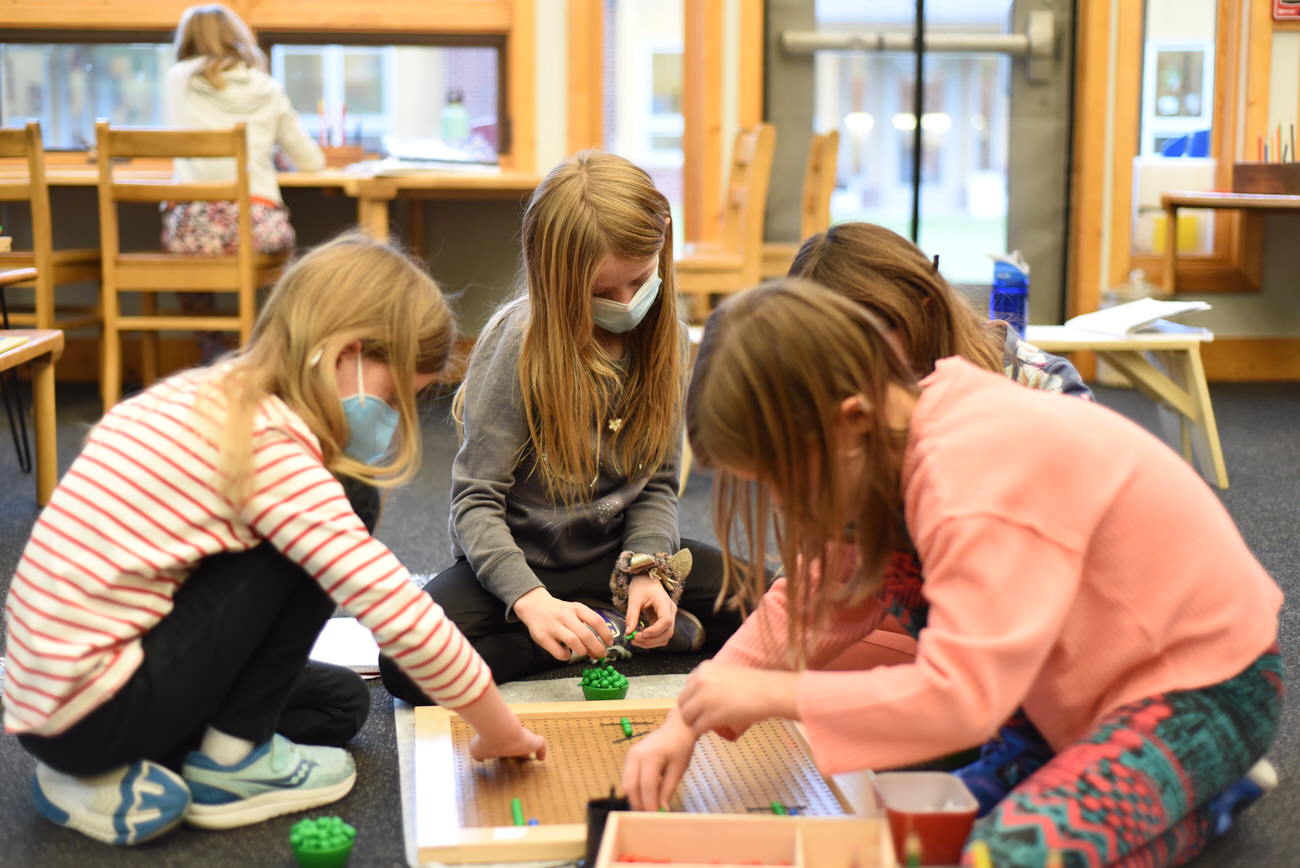Walking into a Montessori elementary classroom, you will more than likely find a group of children moving beads from tubes to a set of boards, as well as transferring these colorful beads between one another. From a distance, it may look like the children are playing with beads. But on closer observation, the children are actually discussing and working through a long division problem. At each level, the Montessori classroom is equipped with a wide variety of materials to assist the child in their learning. This group of materials is designed to aid the child as they pass from a concrete to an abstract understanding.
As children first learn about numbers, quantity is introduced first. This is concrete. The child can see and hold the quantity. Once quantity is understood, numeric symbols are introduced. When ready, the child is asked to associate the quantity (concrete) with the symbol (abstract).
When it comes to learning place value, operations, fractions, equivalence, area, etc, the child works with materials first. The colors and movement through the materials are an intentional progression to help the child understand mathematical concepts in their concrete form. Practice with the materials are repeated often as new steps and ideas are presented. It is in this concrete work, manipulation and exploration of materials, that the mind comes to a complete understanding of the concept.
Children work and grow gradually toward abstraction. Each child will need varying amounts of repetition using the materials. Eventually, they will come to the point of working with paper and pencil only, as most of us were taught to do from the beginning. This will be easy work for them because a clear, deep understanding has already been made with the materials. As adults, we have to be patient not to rush the process. It is in this process that children are also learning patience, perseverance, and teamwork.
This idea of moving from the concrete to the abstract is most easily seen in the area of math, but materials are used in many other areas of the classroom to aid in the understanding of other concepts. Even as children learn the parts of speech and begin to analyze (diagram) sentences, they associate shapes and symbols with each of these parts. Maria Montessori wanted children to have an experience while learning about writing. Impressionistic charts are used in biology and geography to give a visual representation of important ideas, appealing to the imagination of the child.
All of these materials are vital to the prepared elementary environment. They allow the children to access abstract concepts in a tangible way. The materials give children concrete experiences that make way for a deeper understanding of the world around them.
"Education is a natural process carried out by the human individual, and is acquired not by listening to words, but by experiences in the environment.”
~Maria Montessori
